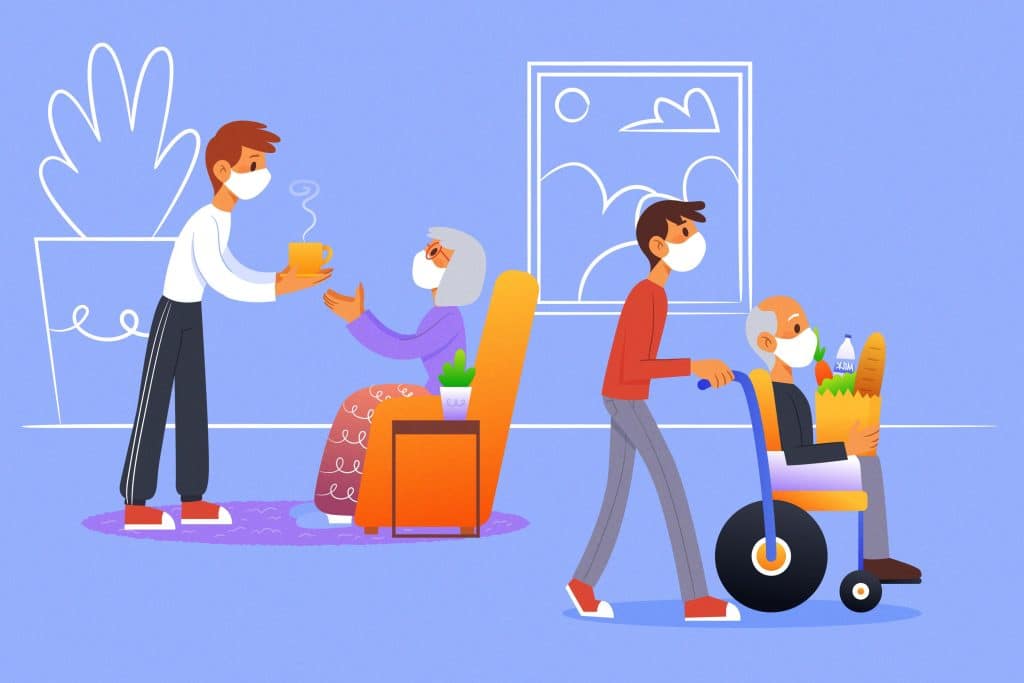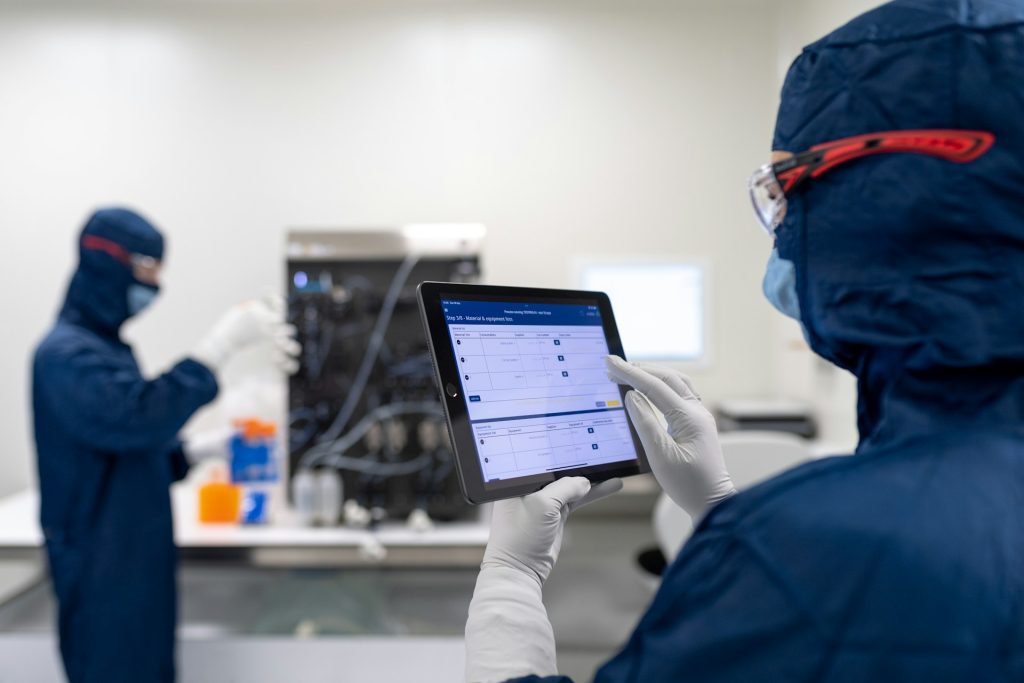Technology is making it easier than ever for support workers to stay connected with their clients with community participation. Video calls, instant messaging, and remote health monitoring help deliver faster, more personalized care—even from a distance.
For NDIS providers, technology helps with scheduling, record-keeping, and communication with clients.
But while there are many benefits of technology, there are challenges too, like the cost of new equipment and how to make sure that everyone can use them easily.
This article will cover:
✔️ How technology is improving support work
✔️ The challenges of introducing technology into care services
✔️ How NDIS providers can best use these tools
Why Strong Relationships are Essential in Support Work
Support work is not just about the provision of services. It is about building strong relationships and trust.
Many NDIS clients have to depend on support workers for:
• Personal care (showering, preparing meals, groceries)
• Emotional and social care
• Health and therapy assistance
A supportive relationship between a client and a support worker leads to:
✔️ Improved trust and comfort
✔️ Greater client needs understanding
✔️ Health and well-being improvement
Technology strengthens such connections by facilitating faster communication for support workers, keeping them better organized, and monitoring client health with ease.
How Technology is Transforming Support Work
1. Instant Communication Tools: Staying Connected Anytime
Previously, clients had to wait for a visit or a call to be able to talk with their support worker. If they needed help or inquired about something, hours or even days later they would call them.
It was hard to obtain instant support, especially in situations of urgency.
Nowadays, communication is made simple and fast with technology. Support workers and clients can be together at any moment, anywhere.
Face-to-Face Video Calls
Video calls make it possible for support workers to see clients from a distance. This is good for:
✔️ Quick health checks – Clients can show support workers how they are feeling without the need for a face-to-face visit.
✔️ Remote support – A support worker can guide a client through simple tasks, including setting up reminders for medication or accessing assistive devices.
✔️ Reducing loneliness – Clients who are living alone can have daily face-to-face interactions, which can improve their emotional well-being.
With video calls, clients can still hear and speak with their support workers, although they are physically distant. It helps in establishing trust and maintaining a healthy relationship.
2. Messaging Apps for Easy and Convenient Support
Messaging apps like WhatsApp, Messenger, and SMS offer clients the easy convenience to remain in touch with their support workers.
They do not have to wait for a visit or call; instead, they can easily send a message whenever they require support.
Clients can use these apps to:
✔️ Make simple requests – Like double-checking appointment slots, asking questions about medication, or requesting changes to their care plan.
✔ ️ Send alerts – If they fall ill, have a query, or need a change of needs, they can alert their support worker quickly.
✔️ Receive reassurance – A text message from a support worker is often enough to provide reassurance, especially when feeling anxious or unsure.
✔️ Send reminders to special needs support workers – Clients can send reminders regarding dietary needs, mobility assistance, or therapy appointments.
✔️ Send voice messages or images – If typing is not easy, clients can leave a quick voice message or send an image to describe their situation.
Why Messaging Apps Are Useful
✔️ Quick and easy – Clients don’t need to wait for a planned call; they can receive assistance immediately.
✔️ More privacy – Certain clients would be ashamed to be discussing personal matters over the phone in public places. Messaging gives them a more private method of communication.
✔️ Better for clients who have speech difficulties – Clients with speech difficulties can type or utilize voice-to-text features to communicate at ease.
✔️ Less stressful – Clients may worry about speaking over the phone, so messaging gives them a less stressful way of asking for help.
✔ ️ Easy for support workers to manage – They can easily respond to simple requests and focus on their work.
Messaging apps mean faster responses, more effective communication, and better client care. Clients feel more connected, safe, and in control of their care.
3. Simple Update Online Portals
Online portals allow clients, support workers, and family members to stay up-to-date with care. The portals provide:
✔️ A secure way of viewing health records and care plans
✔️ Reminder and scheduling facility for appointments
✔️ Updates that can be accessed by family members at any time
For distant family members, these portals are a source of comfort since they can check on how their loved one is faring without needing frequent phone calls.
4. Online Scheduling: No More Missed Appointments
Scheduling used to be done on paper or via phone, leading to misunderstandings and long waiting lists. Today, with online systems, all this is easier.
✔️ Clients can book appointments online
✔️ Support workers get automatic reminders
✔️ Double bookings are prevented by the system
For NDIS participants, that means less stress in making care bookings. For providers, it improves time management.
5. Electronic Health Records: Having Important Information Under One Roof
Support workers need to have access to medical histories, therapy plans, and personal care notes to give the best care.
Electronic Health Records (EHRs) help by putting all this information securely in one place by:
- Offering quick access for caregivers and medical professionals.
- Reducing paperwork and improving efficiency.
- Enhanced care coordination.
For example, if a client needs to have a special diet or has medication reminder requirements, the support worker can quickly access the records online instead of sifting through paper files.
6. Wearable Health Devices: Real-Time Health Monitoring
Fitness trackers and smartwatches are some of the wearable technologies that make it simpler for caregivers to keep an eye on clients’ health.
They can:
✔️ Monitor heart rate, sleep, and activity
✔️ Alert caregivers if a client has a fall
✔️ Aid therapy and rehabilitation
For individuals with a disability or chronic health condition, these devices offer extra security. Support workers receive real-time feedback and can respond quickly if needed.
7. Automation and AI: Reduced Paperwork
Technology enables workers to have more time with clients and less time doing paperwork.
AI-powered software can:
✔️ Automate appointments
✔️ Produce reports faster
✔️ Easily manage invoices and NDIS claims
8. Online Training: Empowering Support Workers to Acquire New Skills
Support workers should be given continuous training to enable them to provide quality care. It is convenient for them to acquire new caregiving skills, new NDIS policy, and problem-solving and communication skills through online training.
Online training offers support workers flexibility in improving their skills anywhere and at any time without going to school.
Challenges of Using Technology in Support Work
1. Privacy and Security Risks
Maintenance of health records on the web can be unsafe if security is properly in place. The support team must secure the systems with passwords and encryption for confidentiality to prevent client details from being misused.
2. Clients with Technical Issues
Some of the clients, specifically the older population, may not be capable of handling digital equipment. To help them, care workers can provide basic step-by-step guides and one-on-one training to assist in building confidence and becoming comfortable with the use of technology.
3. Too Much Technology Costs
Some of the technologies, including wearable devices and artificial intelligence systems, are expensive. To make it less expensive, NDIS providers can use NDIS funding or find less expensive alternatives that improve client care.
4. Blending Technology and Human Interaction
Excessive use of virtual communication can diminish face-to-face interaction with clients. Technology can be leveraged to supplement care instead of substituting home visits so that clients still receive in-person care when needed.
Making Technology Work Better in Support Care
1. Keep it Simple – Choose simple equipment and software that clients and support workers can utilize without difficulty.
2. Train Clients and Support Workers – Provide training sessions so that all parties are aware of how to use electronic tools suitably.
3. Protect Client Information – Make electronic records secure with strong security measures so that data does not get jeopardized.
4. Invest in Useful Tech – Spend money on technology that truly improves care, like health monitors and programs for booking appointments online.
5. Check and Improve – From time to time check if the technology is working well and make adjustments where necessary.
What’s Next for Technology in Support Work?
Technology will continue to change the way support workers deliver care. Some potential future developments include:
✔️ AI chatbots – Providing 24/7 support, answering questions, and navigating clients in real-time.
✔️ Virtual reality therapy – Treating clients with mental illness using virtual experiences.
✔️ Smart assistive aids – Improving mobility and independence for individuals with disabilities.
✔️ Blockchain technology – Providing more secure and transparent health records to protect client information.
Technology is used sensibly and ethically in Support Networks to optimize care while human relationships are at the heart of every service.
Conclusion
Technology is taking support to greater efficiency, less complexity, and better effectiveness.
From internet messaging to health monitoring equipment, support workers can now install more devices to enable clients to connect safely, healthily, and be connected.
It can lead to better care and quality of life for NDIS participants if they have a service provider who leverages innovative technology.
We leverage the latest technology to provide timely, quality, and personalized care.
Need for reliable, technology-enabled care?





















